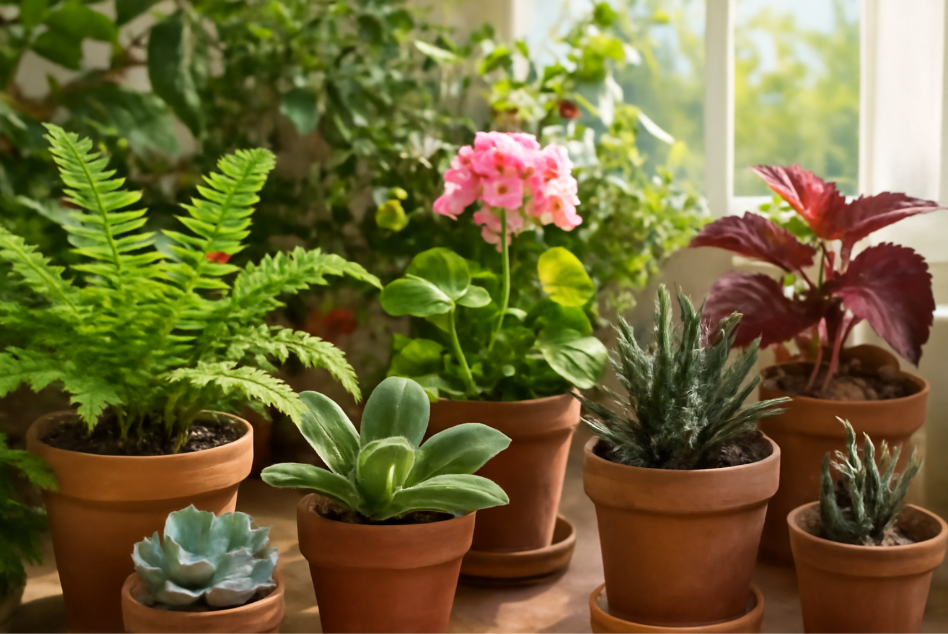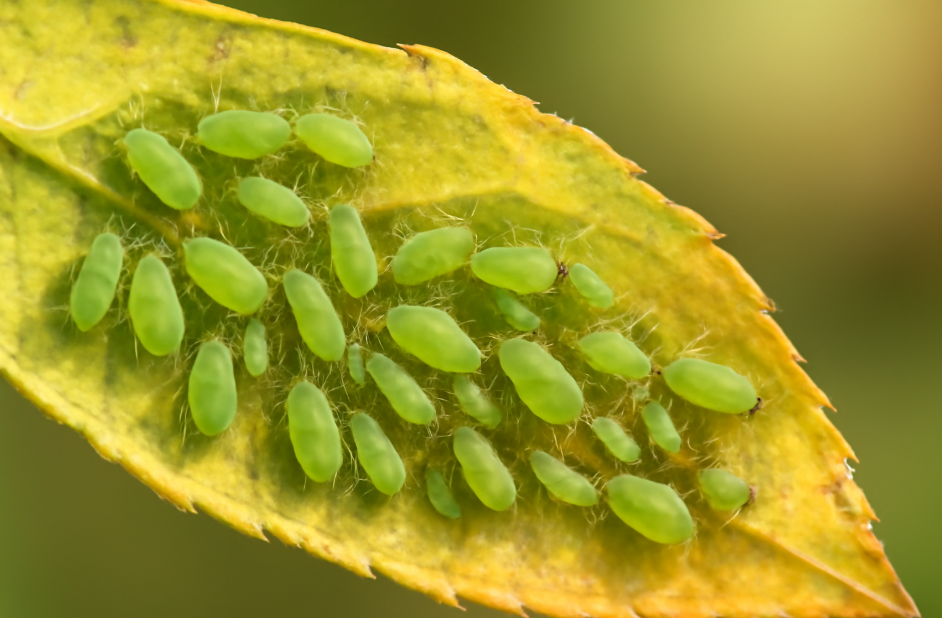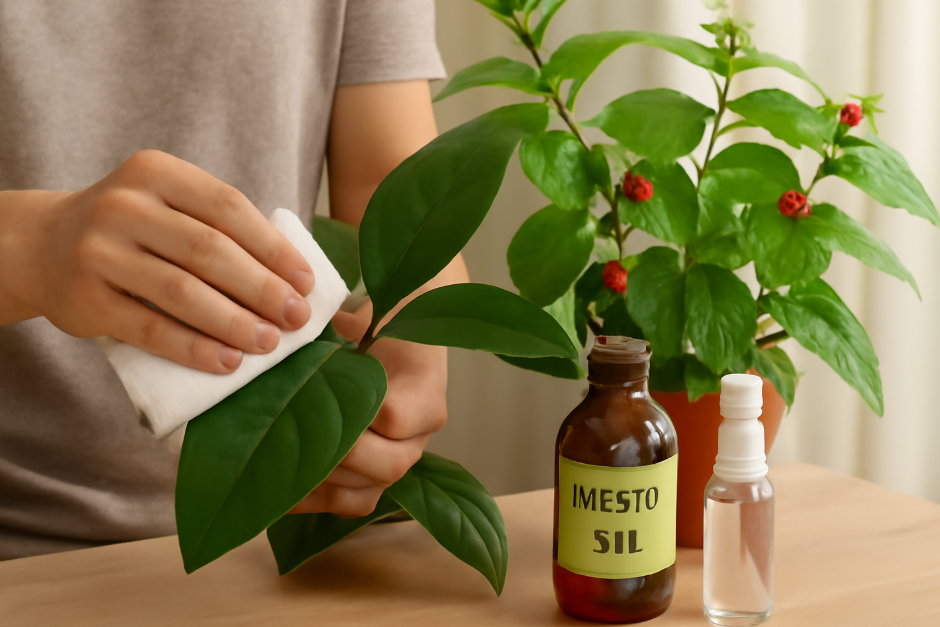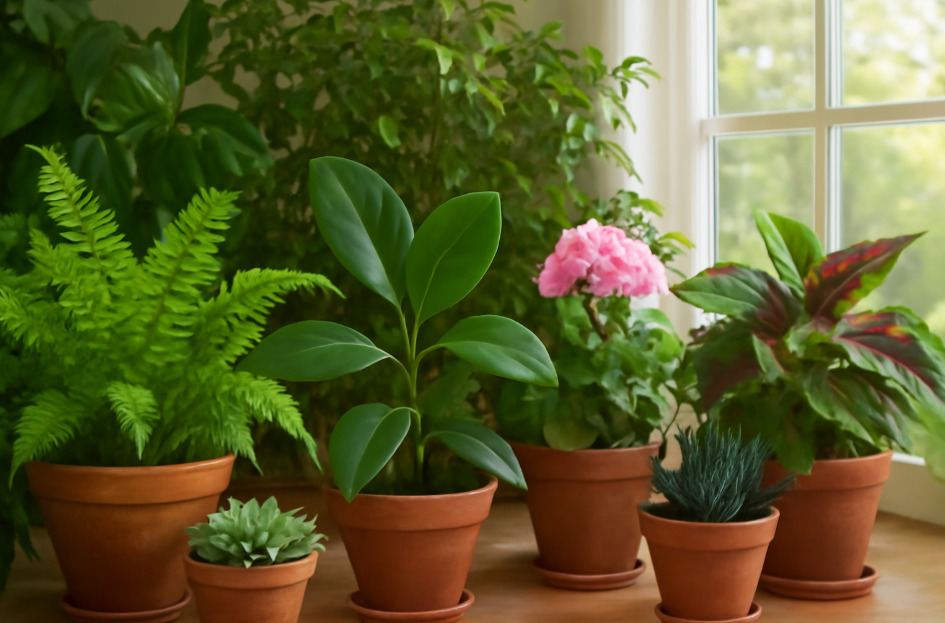
Effective Pest Control Tips for Indoor Gardens: Keep Your Plants Healthy and Thriving
Is your indoor garden plagued by pests that seem impossible to get rid of? 🐜 Whether it’s tiny aphids munching on your leaves or spider mites spinning webs on your prized plants, indoor pests can quickly turn your beautiful garden into a nightmare. The good news is that with the right pest control tips for indoor gardens, you can protect your plants and keep them thriving all year round.
Many indoor gardeners face the frustration of pests wreaking havoc on their plants, but the problem doesn’t have to be overwhelming. In this guide, we’ll walk you through practical, easy-to-implement strategies that will help you take control and eliminate common indoor pests naturally. From simple prevention techniques to effective remedies, you’ll discover how to maintain a pest-free environment and ensure your plants remain healthy and vibrant.
By the end of this article, you’ll have the knowledge and confidence to tackle any pest issue, turning your indoor garden into the flourishing space it deserves to be! 🌿 Keep reading for expert tips that will help you create the ultimate pest-free indoor garden.
Table of Contents
Toggle1. Understanding the Most Common Pests in Indoor Gardens
When you’re growing plants indoors, the last thing you want is to see them infested with pests. 🌱 Understanding the most common pests that target indoor gardens is the first step toward protecting your plants. Let’s take a look at the culprits that could be causing damage to your garden, so you can act quickly and effectively.

Aphids 🦟
Aphids are tiny, soft-bodied insects that come in various colors like green, black, or white. They feed by sucking out the sap from your plants, which weakens them over time. You might notice yellowing leaves or sticky residue (honeydew) left behind by these pests. If left untreated, aphids can cause your plants to wilt and stunt growth.
How to spot them: Look for clusters of small insects, especially on new growth or the undersides of leaves.
Spider Mites 🕷️
Spider mites are not true insects; they’re arachnids. These tiny pests are often difficult to spot with the naked eye, but their damage is unmistakable. They cause yellow or speckled spots on leaves and sometimes leave behind fine webs.
How to spot them: Look closely at the undersides of leaves for tiny, moving dots. You may also see webs if the infestation is severe.
Mealybugs 🐞
Mealybugs are soft, wax-covered pests that usually appear as small, white, cotton-like masses. They tend to cluster in the nooks and crannies of plants, including leaf axils and stems. Mealybugs feed on sap, which weakens plants and can lead to deformed leaves or yellowing.
How to spot them: Look for clumps of white, cottony substance, especially near leaf joints and stems.
Whiteflies 🦋
Whiteflies are small, flying insects that are often mistaken for moths. They feed on the underside of leaves, causing yellowing and wilting. When disturbed, they fly away in a cloud, which is one of the easiest ways to spot an infestation.
How to spot them: Gently shake your plant and watch for a cloud of tiny, white flying insects.
Fungus Gnats 🪰
Fungus gnats are small, dark flies that are commonly found near overwatered plants. The larvae feed on decaying organic matter and plant roots, which can cause root rot and stunted growth. While adult gnats are mostly a nuisance, their larvae can be damaging.
How to spot them: Fungus gnats often hover around the surface of the soil. If you see little flying insects near your plants, you likely have an infestation.
2. Effective Pest Control Tips for Indoor Gardens
Dealing with pests in your indoor garden can feel overwhelming, but the good news is there are plenty of simple, effective ways to protect your plants. 🌿 Whether you’re looking for natural remedies or easy-to-implement practices, here’s how you can control pests and keep your indoor garden thriving.

1. Maintain a Clean Garden Environment 🧹
A clean garden is a pest-free garden! Regularly cleaning your plants, pots, and surrounding area can help remove any pests or debris that may attract them.
- Wipe down leaves with a damp cloth to remove dust and pests.
- Clean pots and trays regularly to prevent pest build-up.
- Avoid over-watering, as damp conditions can encourage pest growth, especially fungus gnats.
By maintaining a clean environment, you make it much harder for pests to take hold. 👌
2. Introduce Natural Predators 🐞
Nature has its own solution to pests! By introducing beneficial insects, you can naturally reduce pest populations in your garden.
- Ladybugs: Great for eating aphids, spider mites, and other small pests.
- Predatory mites: Effective against spider mites and thrips.
- Nematodes: Tiny worms that target pests in the soil, like fungus gnat larvae.
These natural predators won’t harm your plants and can help keep pest numbers under control without using chemicals.
3. Use Organic Pesticides 🌿
When pests invade, it’s time to turn to safe, organic treatments. Organic pesticides can be effective and gentle on your plants. Two top choices include:
- Neem oil: A natural pesticide that works against a variety of pests, including aphids, mealybugs, and spider mites.
- Insecticidal soap: A mild soap solution that kills pests on contact without harming plants.
Tip: Always test a small area of your plant before applying any product to ensure it doesn’t cause damage.
4. Try Homemade Remedies 🍋
If you’re looking for an eco-friendly and budget-friendly solution, consider making your own pest control sprays at home. Here are a few simple recipes:
- Garlic and pepper spray: Blend garlic, hot pepper, and water. This potent mix can repel many pests like aphids and spider mites.
- Dish soap and water: A mild soap solution (1–2 teaspoons per gallon of water) can help remove pests like aphids and mealybugs.
Simply spray the mixture on affected areas, and watch pests disappear! 🌱
5. Control Temperature and Humidity 🌡️
Pests thrive in certain conditions, so adjusting your indoor garden’s climate can help make it less hospitable for them. For example:
- Use a dehumidifier to reduce moisture and prevent fungus gnats.
- Monitor your plant’s temperature and avoid extremes that could stress your plants and make them more susceptible to pests.
By maintaining a balanced environment, your plants will grow strong and resilient against pests.
3. How to Prevent Pest Infestations in Indoor Gardens
Preventing pest infestations before they start is the best way to keep your indoor garden healthy and pest-free. 🌿 Taking a few simple steps can help you avoid the frustration of dealing with a full-blown pest problem later. Here’s how to protect your plants from the start.

1. Quarantine New Plants 🌱
Bringing new plants into your home is exciting, but they can also bring pests along for the ride. To keep your garden safe, always quarantine new plants for 1-2 weeks before introducing them to your main collection.
- Check for pests regularly during the quarantine period.
- Look for signs like sticky residue, webbing, or discoloration on leaves.
By isolating new plants, you can ensure that pests don’t spread to your other plants.
2. Inspect Your Plants Regularly 🔍
A little regular maintenance goes a long way. Set aside time each week to inspect your plants thoroughly for any signs of pests.
- Look under leaves and at the leaf joints—these are common areas for pests to hide.
- Check the soil for gnats or larvae.
Early detection is key to preventing a small problem from turning into a major infestation!
3. Keep Your Garden Clean and Tidy 🧼
A cluttered environment can attract pests. Keeping your garden area clean reduces hiding spots for bugs and makes it easier to spot potential infestations.
- Clean your pots, trays, and surrounding areas regularly.
- Remove fallen leaves or dead plant matter that pests can feed on.
A clean space means fewer places for pests to thrive, making your indoor garden a less appealing target.
4. Avoid Overcrowding Plants 🌳
Overcrowding can create a humid, cramped environment where pests like fungus gnats and spider mites thrive. Ensure your plants have enough space to grow and air to circulate freely.
- Space out your plants so that they have room to breathe and stay healthy.
- Consider pruning overgrown plants to improve airflow.
When your plants have enough space, they are less stressed and better able to fend off pests.
5. Use Healthy Soil 🌾
Healthy soil is the foundation of a healthy garden. Using fresh, well-draining soil can prevent pests like root rot and fungus gnats from taking hold.
- Avoid reusing old soil without treating it first, as it may contain pest eggs.
- If you notice pests in the soil, change the soil or treat it with natural solutions like diatomaceous earth.
Healthy soil supports your plants’ immune systems, making them less susceptible to pest invasions.
4. When to Use Chemical Treatments: A Last Resort
While natural pest control methods should be your first line of defense, there are times when chemical treatments might be necessary—especially if pests are out of control and other methods haven’t worked. 🧴 However, it’s important to use these products carefully and as a last resort. Here’s when and how to approach chemical treatments in your indoor garden.

When to Consider Chemicals ⚠️
Chemical pesticides should be your go-to only when:
- Natural methods fail: If organic solutions like neem oil, insecticidal soap, or beneficial insects aren’t making a dent in the problem.
- Severe infestations occur: When pests like aphids or spider mites have overwhelmed your plants and are causing significant damage.
- Other methods are too slow: If you need immediate relief, and the infestation is harming the plant’s health.
Choosing the Right Chemical Pesticide 🛒
If you decide to go the chemical route, it’s important to choose the right product. Here are two main types:
- Systemic Pesticides: These pesticides are absorbed by the plant and kill pests when they feed on it. They are effective for persistent pests like aphids or whiteflies.
Tip: Systemic pesticides are great for stubborn infestations but may take a bit longer to show results. - Contact Pesticides: These work by killing pests on contact, which can provide quick relief. However, they only kill the pests directly sprayed and may need multiple applications.
Tip: Contact pesticides are ideal for targeting visible pests like mealybugs or spider mites.
How to Use Chemicals Safely 🌿
When using chemical pesticides, it’s crucial to apply them correctly to avoid harming your plants or the environment.
- Follow the label: Always read and follow the instructions on the pesticide label for safe and effective use.
- Test on a small area: Before applying to the whole plant, spray a small, hidden part to ensure it won’t cause damage.
- Apply in moderation: Use pesticides sparingly and only when necessary. Overuse can harm beneficial insects or lead to pesticide resistance.
- Avoid during bloom: If possible, avoid using chemicals while your plants are flowering or producing fruit, as it can affect pollinators and plant health.
Precautions to Take 🔒
- Ventilate your space: After applying chemicals, open windows or use fans to ensure proper air circulation.
- Keep pets and children away: Always store pesticides safely and keep them out of reach of pets and children.
- Avoid overuse: Over-relying on chemical treatments can harm your plants and the ecosystem. Use them only when absolutely necessary.

Dealing with pests in your indoor garden can be challenging, but now you have the tools and knowledge to tackle the problem head-on. By understanding the common pests, using natural pest control methods, and taking proactive steps to prevent infestations, you can keep your plants healthy and thriving year-round. 🌱
Remember, pest control isn’t about being perfect—it’s about staying vigilant, monitoring your plants regularly, and using the right techniques when needed. Whether you’re wiping down leaves, introducing beneficial insects, or applying an organic pesticide, every small action adds up to a pest-free garden. 😊
With these practical tips in hand, you’re well on your way to becoming a confident and informed indoor gardener. Take control of your garden’s health, and watch it flourish without the worry of pests. Happy gardening! 🌿✨
Frequently Asked Questions (FAQs)
1. How do I get rid of pests in my indoor garden naturally?
To get rid of pests naturally, try using organic solutions like neem oil, insecticidal soap, or garlic-pepper spray. You can also introduce beneficial insects like ladybugs or predatory mites, which feed on common pests. Regular cleaning and proper plant care are essential in preventing infestations. 🌿
2. What are the signs of a pest infestation in my indoor plants?
Common signs of a pest infestation include yellowing leaves, sticky residue on leaves or surfaces, webbing (especially from spider mites), and visible pests like tiny bugs or flying insects. If your plants seem unhealthy or are growing slowly despite good care, it’s time to inspect them for pests. 👀
3. Can I use chemical pesticides indoors on my plants?
Yes, you can use chemical pesticides indoors, but they should be a last resort. Opt for products labeled as safe for indoor use and always follow the instructions carefully. To avoid harming beneficial insects and your plants, use them sparingly and only when necessary. 🌱
4. How do I prevent pests from entering my indoor garden?
To prevent pests, quarantine new plants for 1–2 weeks before introducing them to your indoor garden. Regularly inspect your plants for pests, and keep your environment clean by removing fallen leaves or debris. Additionally, avoid overcrowding plants, as it creates an ideal environment for pests to thrive. 🚫
5. What’s the best way to control fungus gnats in my indoor garden?
Fungus gnats are often attracted to overwatered plants. To control them, allow the top layer of soil to dry out between waterings. You can also use yellow sticky traps to capture adult gnats or sprinkle diatomaceous earth on the soil to kill larvae. 🌾
6. How can I prevent spider mites from damaging my indoor plants?
Spider mites thrive in dry, warm conditions. To prevent them, maintain humidity around your plants, regularly clean leaves, and avoid overcrowding. If you notice spider mites, treat with a mite-specific pesticide or neem oil to get rid of them quickly. 🕷️
7. Are there any plants that naturally repel pests in indoor gardens?
Yes! Plants like basil, lavender, marigolds, and mint are known to repel pests such as aphids, mosquitoes, and whiteflies. Adding these plants to your garden can help keep pests away while also enhancing the beauty of your space. 🌸
8. How often should I check my indoor plants for pests?
It’s a good idea to check your indoor plants for pests at least once a week. Early detection is key to preventing pest problems from becoming severe. Look for any unusual spots, webs, or bugs, and address them promptly to keep your plants healthy and pest-free. 🧐
